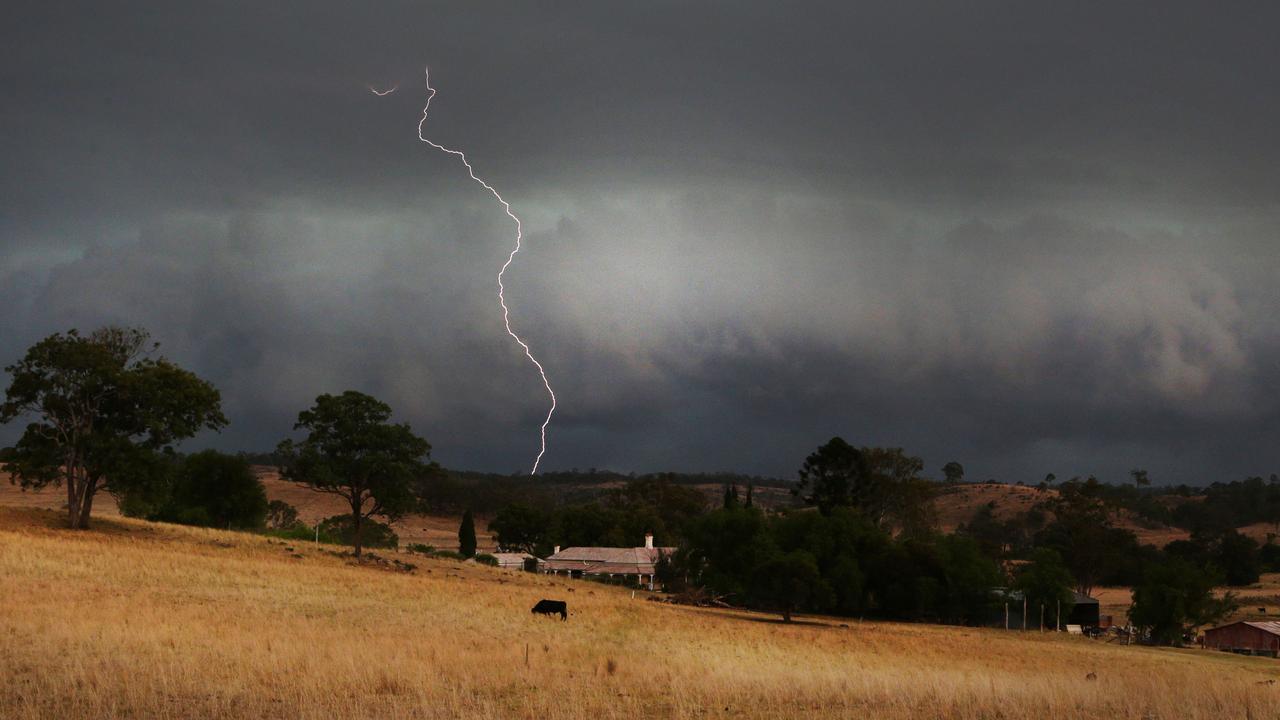Deadly fire ant infestation on Logan River raises alarm south of border
Heavy rains and snap flooding along sections of the Logan River have led to a massive outbreak of deadly red fire ants, after the insects were seen building ‘rafts’ to stay afloat. WATCH THE VIDEO

QLD News
Don't miss out on the headlines from QLD News. Followed categories will be added to My News.
Heavy rains and snap flooding along sections of the Logan River have led to a massive outbreak of the deadly red fire ants, after the insects were seen building “rafts” to stay afloat in the swollen rivers.
Infestations at Cedar Grove and near Waterford caused significant concern among local authorities and environmental groups, which were forced the halt a major tree-planting initiative and pushed authorities south of the Queensland border into damage control.
The state government’ fire ant eradication team warned people against touching the rafting colonies on the Logan River and said the outbreak was not a new infestation.
The Invasive Species Council and Cedar Grove Landcare Group sounded the alarm over the ant infestations with Invasive Species Council advocacy manager Reece Pianta claiming the outbreak was catastrophic”.

“If we have another flood anytime soon, the spread of fire ants will be catastrophic downstream,” Mr Pianta said.
“Current infestations through Cedar Grove and Waterford could impact communities downstream if urgent action isn’t taken.
“If the spread of fire ants is left unchecked, it will result in economic damage greater than that caused by cane toads, rabbits, feral cats, and foxes combined,” he warned.
Mr Pianta said surrounding communities and livestock and horses between Waterford and Cedar Grove, were also affected.

He said there had been constant reports of horses and cattle being regularly stung by the super pests.
Cedar Grove Landcare Group president Rachel Hughes said the group was contracted to restore large sections of the Logan River by Healthy Land & Water on private lands, which involved weed treatment, brush cutting, foliar spraying of herbicides, planting, and watering.
However, the massive infestation of fire ants in the project area had halted the group‘s work.
“As a contract services team working in fire ant suppression zones, we encounter fire ants daily, which has required significant adjustments to how we operate,” Ms Hughes said.
“Our task on the Logan River was to plant 450 tube stock along the river, normally a very easy task.
“In cases of dense infestations, restoration work cannot go ahead.
“However, in this instance, we had to rethink our entire methodology to mitigate the issue of fire ants.”

Logan City Council said it had not received reports of fire ant nests within the Cedar Grove area over the past two weeks.
The council said the biosecurity threat from fire ants on the Logan River was a matter for the state government’s National Fire Ant Eradication Program, even though the council was a member of the state’s Fire Ant Suppression Taskforce.
The taskforce said since January it had received no official complaints that fire ant bites had affected livestock or horses.
It said it had received two complaints about fire ant treatment allegedly affecting pets and livestock including a claim that the baits caused the deaths of cattle.
The taskforce also said it had a plan to eradicate fire ants from Australia by 2032 by treating 100 per cent of all targeted properties in its eradication zone “whether fire ants are visible or not”.
“Everyone in our fire ant suppression area is encouraged to help reduce fire ants by self-treating the land they own or manage, ahead of eradication efforts reaching their area.”
The fire ant rafting infestation prompted Logan Mayor Jon Raven to call for other levels of government to fully fund a proper response to the “biosecurity threat” after the council had committed $342,500 in this year’s budget.
A Logan submission to a Senate Inquiry into Red Imported Fire Ants in Australia in January 2024, estimated surveillance and suppression would cost up to $1.7 million over a three-year period and millions more over a decade, which could burden ratepayers without a collaborative cost-sharing approach.

Logan council also said private landholders, including those with large agricultural holdings, were also responsible for treating infestations under the Biosecurity Act 2014.
“Council is meeting its legislative obligations by undertaking broad suppression and reactive treatments at Cedar Grove Environmental Centre and other council-owned land in the area,” a statement said.
“Since the Senate inquiry in January, no funding has been made available to local government for carrying out RIFA surveillance and suppression activities, despite the inquiry recommending an urgent review of funding be carried out.”
Logan council funded a new Red Imported Fire Ant business unit to carry out surveillance and suppression activities on its land.

In December 2023, the Department of Agriculture and Fisheries advised that all councils in southeast Queensland were expected to manage fire ants on all council-owned, leased or managed land from June 30, 2024.
Fire ant bites can be lethal to humans and were forecasted to have a $2 billion a year detrimental impact on Australia’s economy if out of control.
The fire ant rafting infestations coincided with a number of fish deaths along the Brisbane River at Toowong this week.

Residents reported seeing 75 to 100 dead fish from the Regatta Hotel up to Milton Rd.
State environment officers are investigating and have urged members of the public to report any additional sightings of dead fish or provide any relevant information that may assist in the investigation.
Reports can be made via the state’s pollution hotline at 1300 130 372.
More Coverage
Originally published as Deadly fire ant infestation on Logan River raises alarm south of border





